
Thursday, July 3, 2014 B
"At Last, Ancient Egyptian!"
9:59pm

Thursday, July 3, 2014 B
|
| From the 30th Dynasty, I go back to the 4th Dynasty to recall Prince Ankh-haf's bust, for similar subtlety of portrayal: |
As marvelous as his portrayal, he lacks ears! They must have been applied afterwards and gotten lost: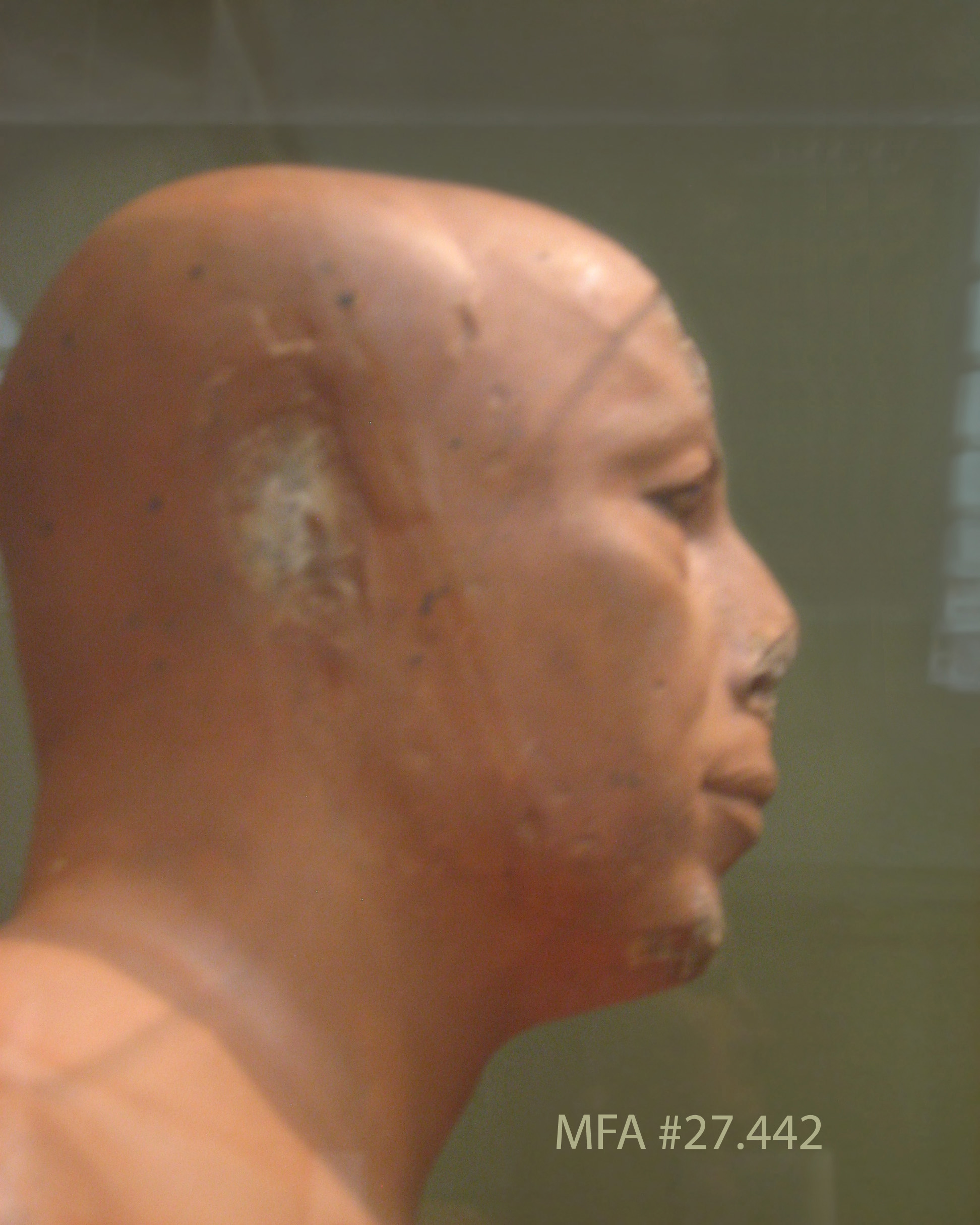 (Photos all © Joan Lansberry |
| King Menkaure's greywacke sculptures, also from the 4th dynasty, are exquisite. I tried to capture them from many angles, (the one of him with deities here and the one of him with his wife here.) |
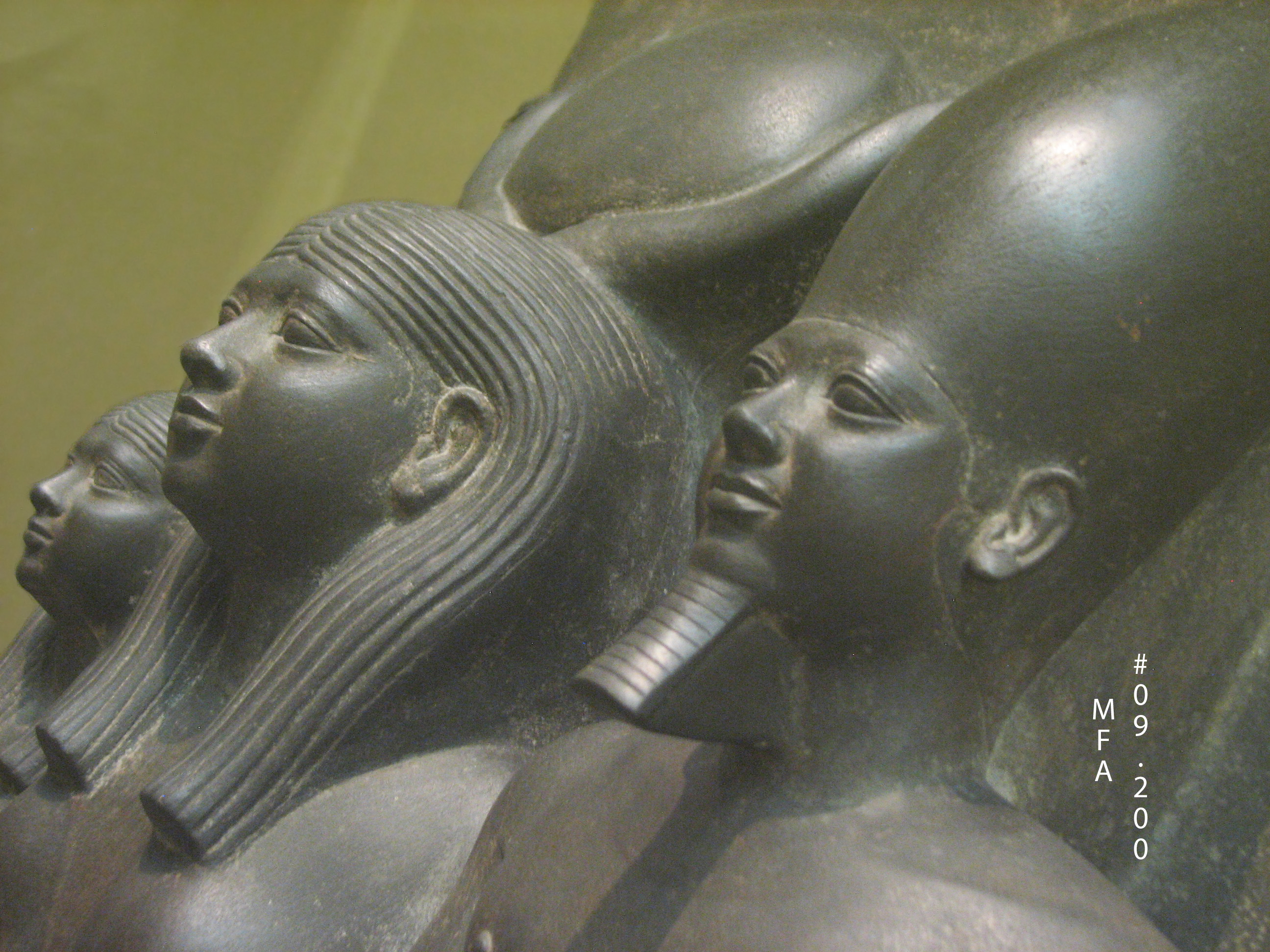
| Oh, yes, we had a Set sighting! Julia was first to point it out on Meresankh's sarcophagus, (She who sees Horus and Set.) |
 "One who sees Horus and Seth, Meresankh." 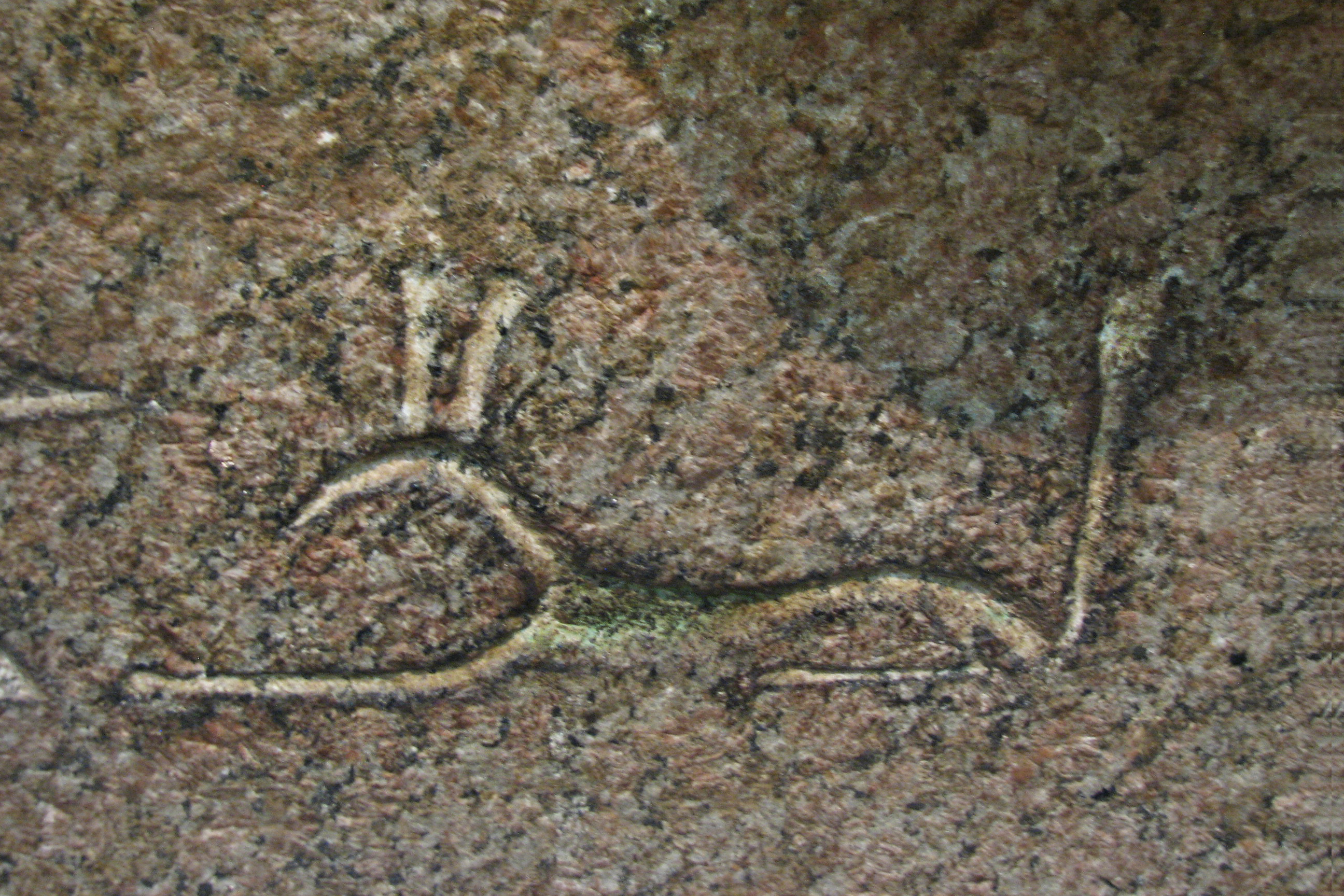  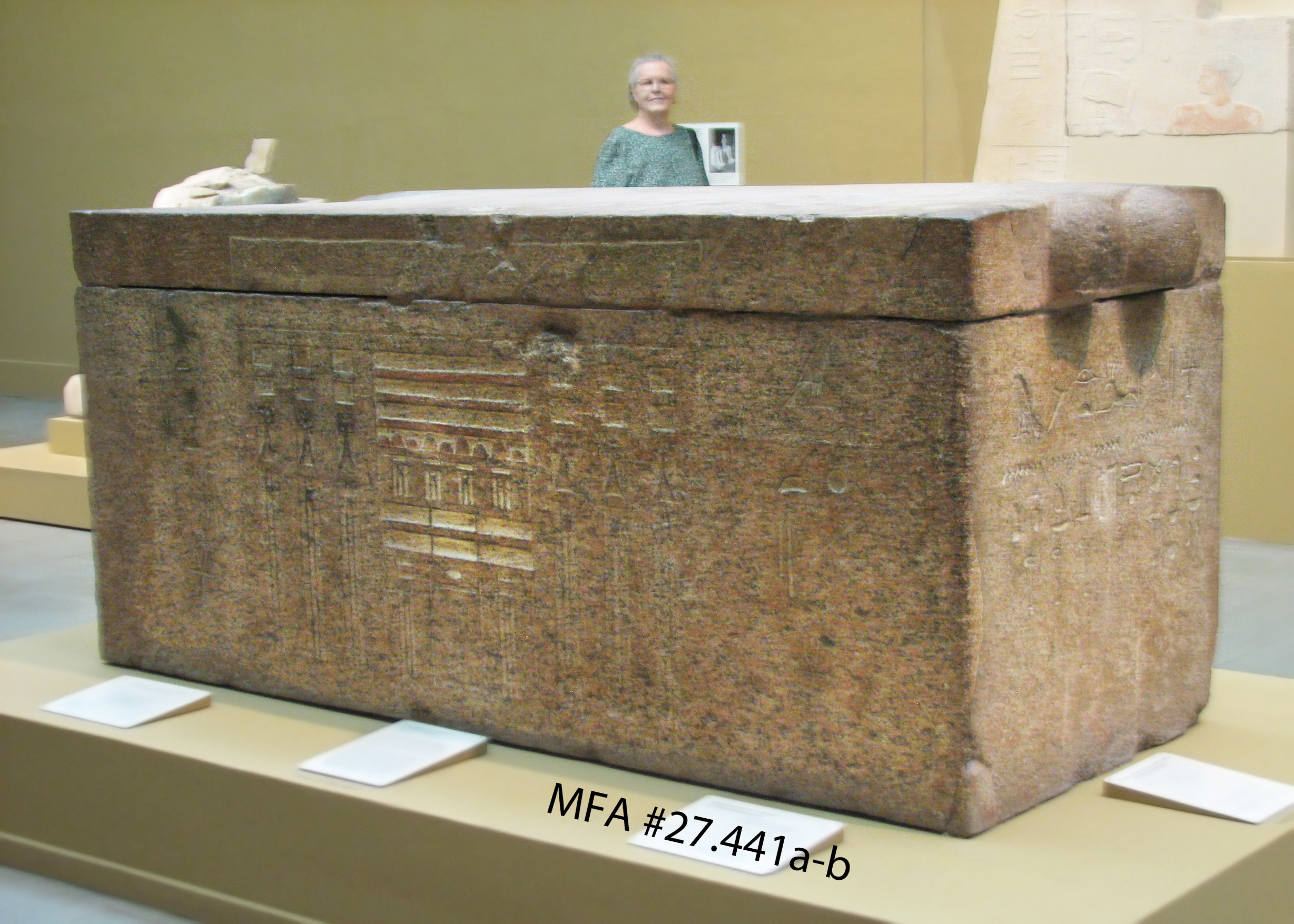 |
| Another memorable moment was examining the sarcophagus which Queen Hatshepsut had recut for her father: |
| I explored the carvings on the inside, as well as the outside. The eyes cut on the outside were also cut on the inside, in the exact cooresponding place! In this way, the soul of its inhabitant could look out to see: |
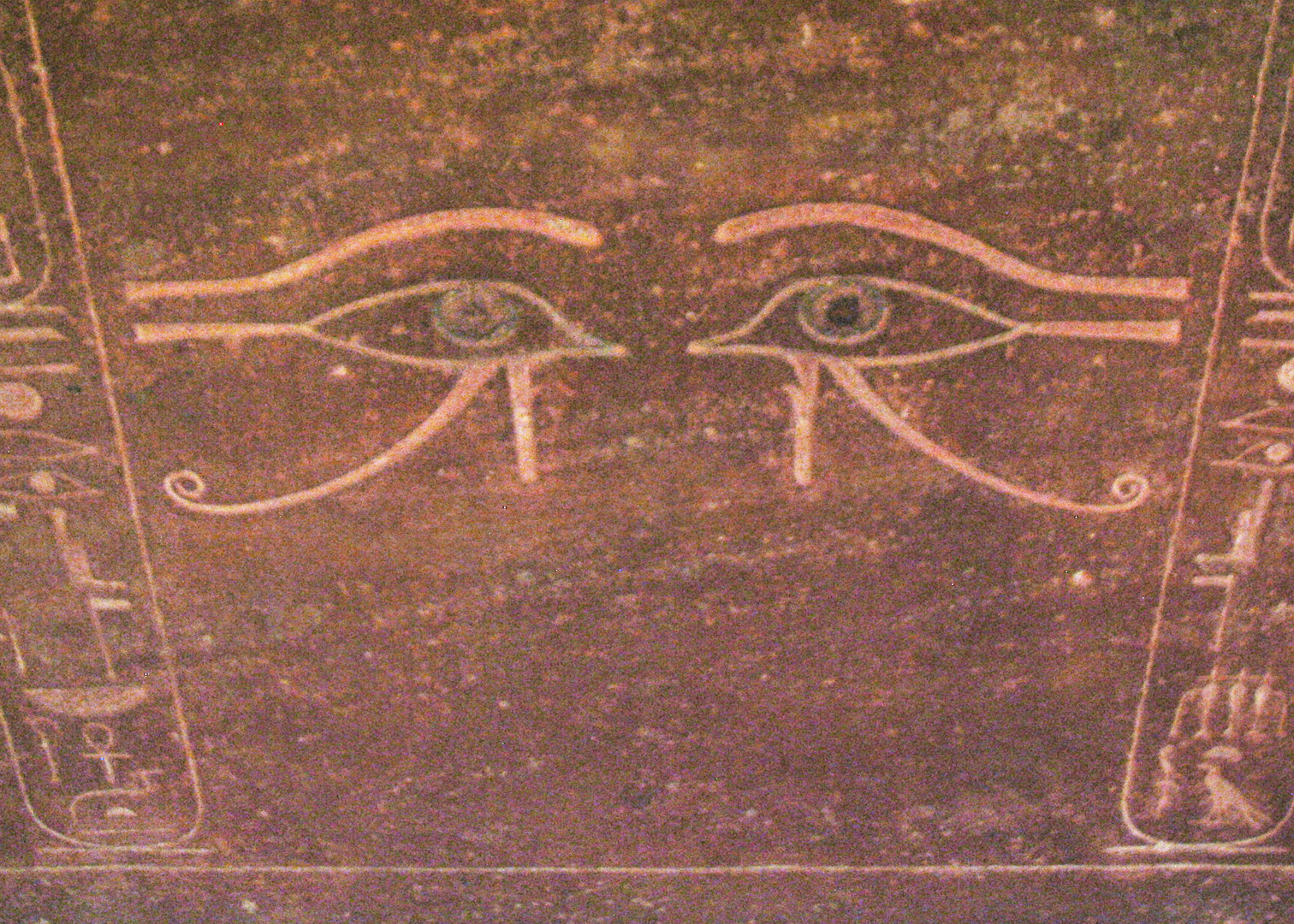 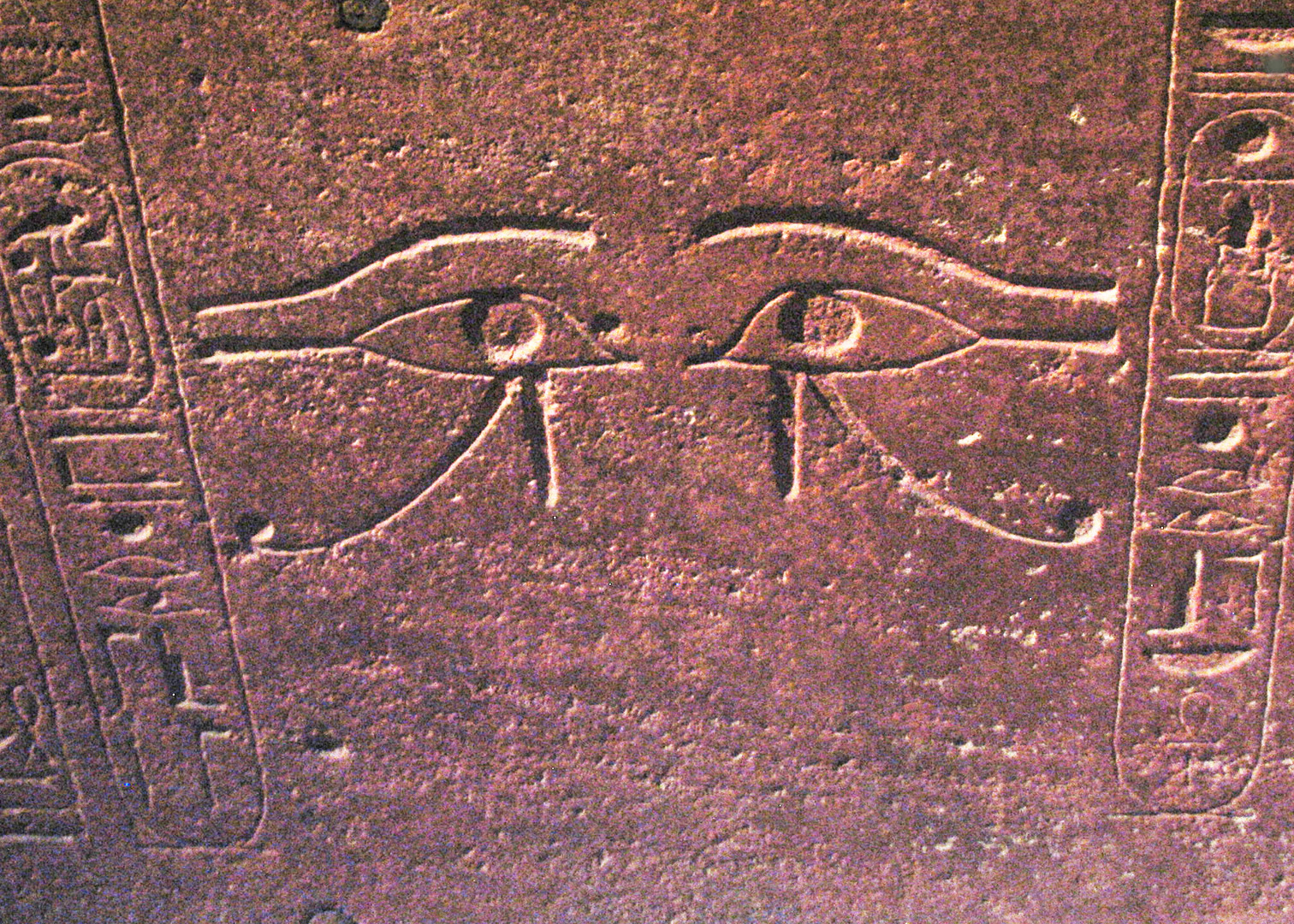 Outer first, then inner... |
| Similarly, the engravings of the deities are also matched. Anpu on the outside and Anpu on the inside allow the powers of the Netjer to more easily pass through to the occupant: |
 
|
|
A memorable meal of baked chicken and aspargus, along with a shared dessert of honeycake gave Julia and I sufficient strength to see the remainder of the ancient Egyptian galleries, and the temporary Magna Carta exhibit. There's such amazing tiny script on the carta, so tiny and yet so exact and perfect! We will return another day for the Impressionists... |
Forward...
Go Back to Archives...
Go Back to Main Journal Index Page...
Go to Index of Joan's pages...
![]()
© Joan Ann Lansberry